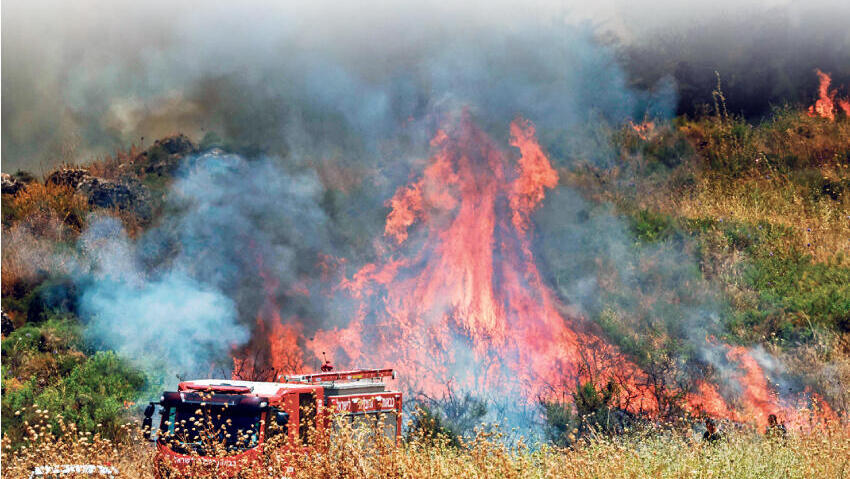Getting your Trinity Audio player ready...
Since the beginning of the year, more than 12,800 acres of nature reserves and natural areas have been scorched in the Golan Heights and Upper Galilee due to rocket and missile fire from Hezbollah into northern Israel. A significant portion of these fires erupted in the last two weeks.
The result of the fires
(Video: Jewish National Fund)
According to data from the Israel Nature and Parks Authority, the areas that have suffered the most extensive damage so far are in the Upper Galilee (approximately 7,400 acres) and the Golan Heights (approximately 5,500 acres). About half of the burned area is within nature reserves and national parks, while the other half consists of open spaces and forests.
In the Upper Galilee, a total of 7,345 acres have burned (including 2,900 acres of Nature and Parks Authority lands). In the Golan Heights, 5,590 acres have been torched. By comparison, in 2018, when Palestinians in Gaza launched incendiary kites and balloons toward the border area, 3,212 acres of reserves and national parks burned, based on the authority’s data. This contrasts with 5,930 acres of reserves and national parks that have burned in northern Israel since the beginning of 2024.
Amit Dolev, an ecologist for the Northern District at the Israel Nature and Parks Authority, said it is unclear what the lasting effects of the fires will be. "The ecosystem has been dealing with fires for thousands of years, but their intensity and frequency are now higher. We still don’t know the long-term consequences. The vegetation will usually regenerate by next year. Many trees regenerate after a fire, but some, like cypress and pine, do not. Due to the intense and widespread fighting we are experiencing today, the extent of the fires is large. We can’t reach most places," he said.
Small wildlife, such as reptiles, do not survive the fires. Larger wildlife, such as wild boars, can escape. "It’s hard for us to know what this does to them," adds Dolev, "but surely they will have less food available. We all hope that after the rains of the coming winter we will see fewer fires. Tabor oaks will usually manage to regenerate, even if they experienced a large fire, but it will take them many years to reach their former state."
On Friday, fires that had broken out in the north reignited. On Saturday, fires were ignited in Nahal Dishon and the northern slopes of the Golan Heights as a result of hostile exchanges. In the past two weeks, with the intensification of the fires in extensive areas of northern Israel, the authority’s teams have dealt with complex fires that often threatened nature reserves and national parks. In the Yehudiya Nature Reserve, the fire reached the entrance to the site, but the teams managed to extinguish it.
"Thousands of acres have burned. We know that some areas burned with intense fire, and others less so," says Eran Heims, director of the Upper Galilee region at the Israel Nature and Parks Authority. "Ultimately, every area that burns also destroys the habitat of wildlife and vegetation. We try to reach the fire center as quickly as possible as soon as it starts, but it is important to understand that our work is carried out in areas where there are rocket falls."






